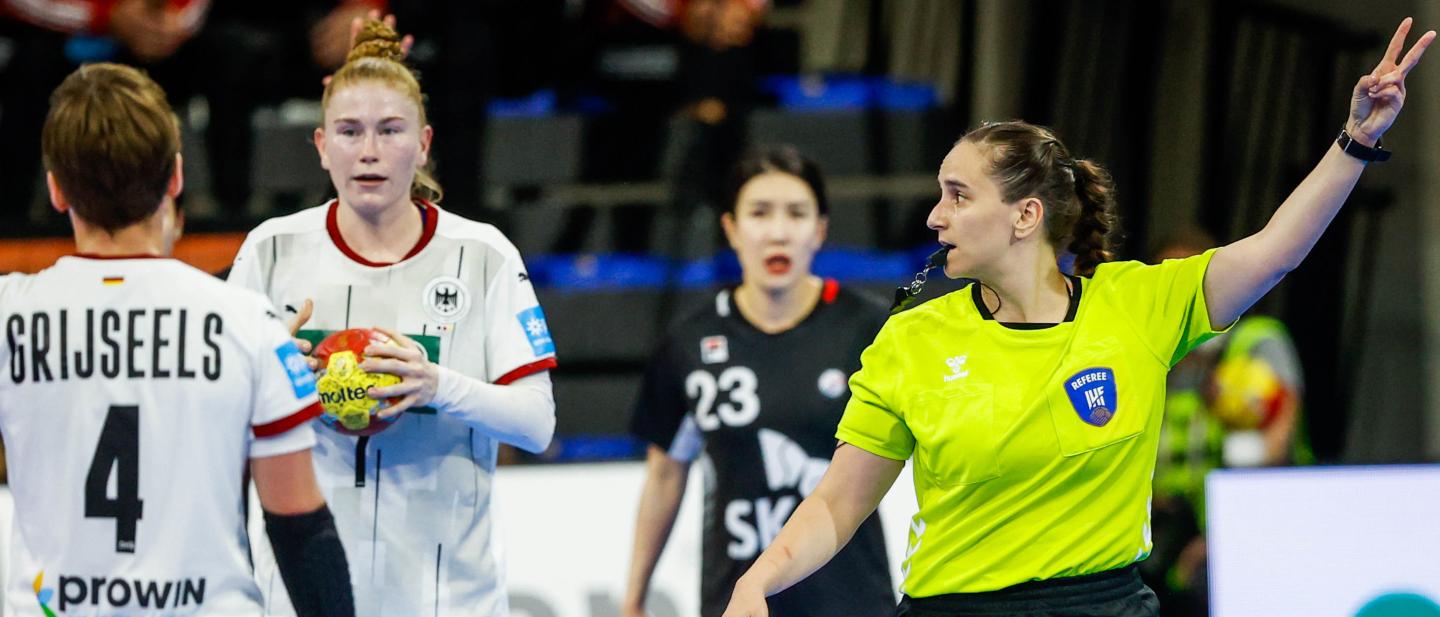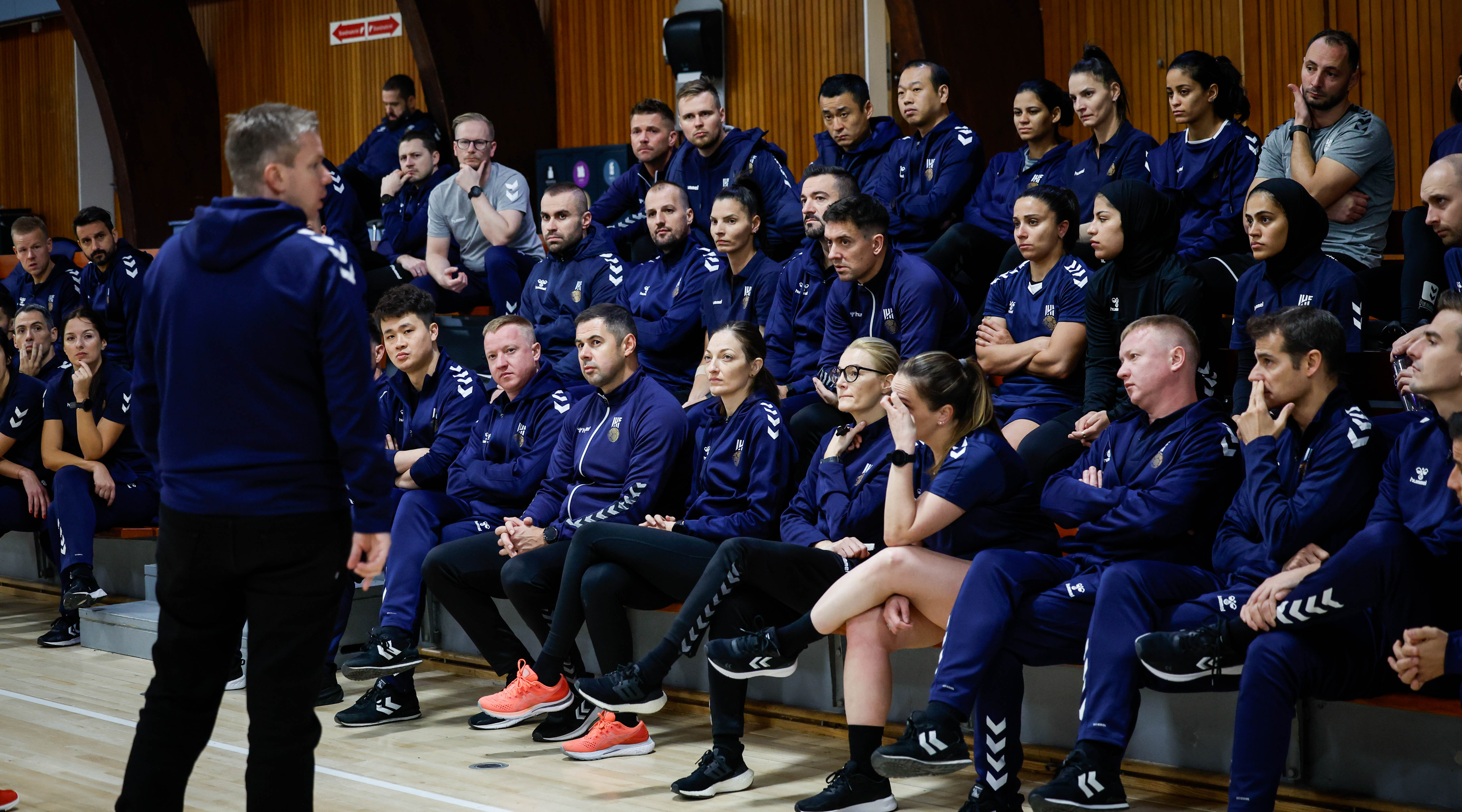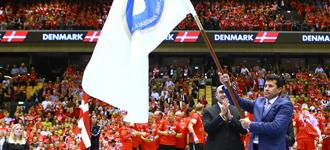Referee guidelines target predictability and transparency at DEN/NOR/SWE 2023
27 Nov. 2023

The final days prior to the start of the 26th IHF Women’s World Championship involve an intensive programme of preparations for the 23 referee pairs selected for the event. The 27 technical delegates who will oversee the 112 matches that will be played during the course of the World Championship, running from 29 November to 17 December, have their own preparation schedule as well as multiple combined lectures and discussions with the referees as the IHF aims to again deliver a uniform line across all officials involved in game management.
There are six main focus points for the referees during the Women’s World Championship — the first to be co-hosted by three countries: The punishment line, simulations, the line player zone, seven metres versus offensive faults, irregular goals and basic game management. All of these topics have been a main area of focus for the IHF over recent years, and a core goal remains to keep the matches as uninterrupted as possible and as fast as possible, with fairness, protecting the health of the players and protecting the image of the sport as key values.
“The aim in these two days is to synchronise a bit and make some adjustments,” said chairman of the Playing Rules and Referees Commission Per Morten Sødal. “There will not be any revolutions.”
That same sentiment was included in the guidelines sent to the 32 federations and teams participating in the World Championship as well as the referees before the event. The defined aim of sharing the uniform guidelines is “to create predictability and be transparent for all participants.”
In the guidelines, the focus points were extrapolated with subpoints of focus for the referees — and teams to be aware of — as follows:
- Game management: Game continuation, consistent lines, and body language and personality
- Punishment line: Legal contact versus fouls, progressive punishments, and direct two-minute suspensions versus red (and in relevant cases blue) cards
- Simulations: Players faking contact, attackers overreacting when making contact, and defenders trying to provoke attacking fouls
- Line player zone: Making good decisions by paying attention to who makes the first foul and who benefits most from the violation, avoiding excessive holding, and offensive fouls
- Seven metre versus offensive fouls: From whether something is a foul or not to whether a clear scoring chance or body control is lost, who has the position first and use of the goal area
- Irregular goals: Reduce number of goals after step violations, paying special attention to when the ball is bounced; and improved observation of players landing the goal area before scoring
While the guidelines emphasise that balance is very important, that does not equate to compensation for any errors in judgement or attempting to make the situation equal for both teams if one team is committing more violations. The guidelines also highlight that referees should clearly communicate the line when a situation is close to the limit, not only after punishments — “give the teams/players the chance to adjust.”
After an initial introduction outlining all the key areas, the guidelines progress with a series of video examples and examinations of previous referee performances, evaluating what was done right and where mistakes may have been made and clearly outlining how the IHF are addressing each issue identified in the focus points. It is these fine details that the referees and technical delegates spend time discussing and improving understanding on in the preparatory days leading up throw-off.
For example, regarding the punishment line: “We are working a lot with the referees finding a good balance between attackers/defenders. We don’t want more suspensions and interruptions than necessary. However, the referees are instructed to follow a strict punishment line to protect both the health of the players and the image of our sport.”
The six focus points are elaborated in detail, along with other important topics such as the throw-off, shots in the head of the goalkeeper and passive play. The match-assisting technology that will be in use at the Women’s World Championship is also outlined, including the video replay system and the electronic team time-out buzzer.
With the transparent sharing of the same guidelines between the referees and the participating teams, the goal of the PRC, to ensure predictability in refereeing, should be achieved and the highest standard of competition guaranteed.

A focus on details related to performance
As part of the preparatory days, the referees have also undergone rules and fitness and health tests. During the World Championship, as is the usual procedure, the referees will be assessed on every performance, with a dedicated observer for each match who then runs through their feedback with the pair. A team approach is encouraged among the referees and with the delegates.
As has been the case since January 2018, the IHF referees work closely with FITGOOD PRO, whose team includes a fitness coach, physiotherapists and a nutritionist led by manager and wellness coach Sergi Cedrún. FITGOOD PRO are in touch with the referees year-round outside of IHF competitions, and also work with many of the World Championship referees in European Handball Federation competitions. During the events, the FITGOOD PRO team are on site to help referees manage their physical performance, personal health and recovery.
The referees and delegates represent four continental federations and arrived in Copenhagen for the last days of preparation on 25 November, with all to disperse to the playing venues on the day before throw-off. Presenters sharing their expertise with the referees and delegates on the preparation days included chairman of the Commission of Coaching and Methods Dietrich Späte, sharing tactical insights from a coach’s perspective, and psychologist Johan Ingi Gunnarsson along with Sødal.






